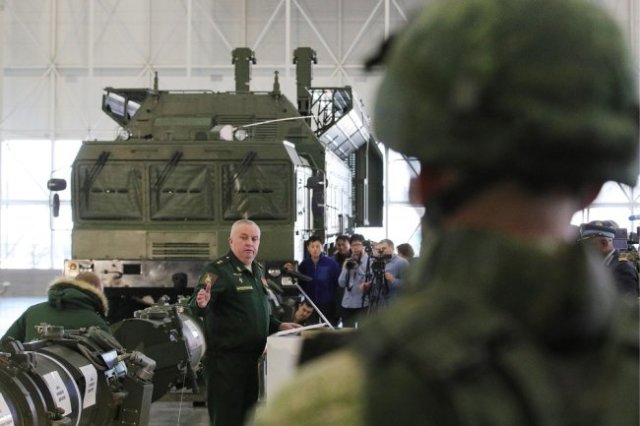Rocket troops and artillery celebrate their professional holiday on November 19. Artillery proved its indispensability during the great Patriotic war. Even the date of the celebration of the day of the gunner is not accidental. On November 19, 1942, Soviet troops launched a counteroffensive at Stalingrad, and the path was paved by gunners, delivering crushing blows to the enemy.
Lieutenant-General Mikhail Matveevsky, chief of the missile forces and artillery of the Russian Armed Forces, told Rossiyskaya Gazeta about how this branch of the armed forces is being modernized.
Mikhail Mikhailovich, on the battlefield, the artillery always comes first. Today is the time of precision weapons. New guns are able to deliver high-precision strikes while remaining invulnerable?
Michael Matveevskaya: Of course. First of all, this applies to the new artillery complex "Coalition-SV". Without exaggeration, this complex can be called unique. For the first time in domestic practice, an uninhabited combat compartment was introduced on a serial model of a large-caliber artillery system.
The crew is located not in the gun turret, but in the undercarriage of the gun. All the processes of loading and aiming the guns is fully automatic.
The use of advanced technical solutions allowed us to reach a qualitatively new level in terms of the characteristics of the rate of fire, time to complete fire tasks and security of the calculation.
The first samples of the "Coalition" this year entered the experimental military operation in the connection of the Western military district. Based on its results, a decision will be made on their serial purchase.
The weapon of the complex can fire almost like a machine gun. Loading and firing are automated. It shoots for 70 kilometers, which is superior to foreign counterparts. Such a unique complex requires special, "smart" projectiles?
Michael Matveevskaya: High-precision ammunition with a variety of guidance systems, including those that implement the "shot and forget" principle, is an integral part of any promising artillery complex in modern conditions. Only high-precision ammunition allows you to selectively defeat important single targets, dramatically reducing the consumption of projectiles and reducing to a minimum the time spent by guns in the firing position.
"Coalition-SV" will enter service with an expanded range of ammunition, which will include high-precision projectiles.
And what about the descendants of the legendary "Katyusha" - "Grads", "Hurricanes", "Tornadoes"? Will they still hit "squares" or are there "smart" projectiles for them too?
Michael Matveevskaya: Modern upgraded Tornado-G multiple launch rocket systems continue to be delivered to the combined-arms rocket artillery units. They're able to automatically lock on to the target.
Rocket artillery formations are being re-equipped from large-caliber Smerch multiple launch rocket systems to the upgraded Tornado-S. These new vehicles have increased their range and accuracy characteristics. The range of rockets has also been expanded.
We are already conducting scientific work to substantiate the promising appearance of jet artillery weapons. At the same time, work continues to improve the capabilities of existing samples. So, modern machines of the Tornado family are not only a means of destroying "area targets", but also high-precision complexes with guided missiles. They are capable of hitting individual targets at considerable distances.
Currently, a promising image of jet artillery weapons is being developed. At the same time, work continues to improve the capabilities of existing samples.
Your professional holiday, on which Rossiyskaya Gazeta congratulates you and all your comrades-in-arms, is not accidentally called the day of rocket troops and artillery, and not Vice versa. After all, the main striking force of the army is missiles. And in the first place - "Iskander". Are they outdated yet? Don't you prepare a shift for them?
Michael Matveevskaya: The Iskander-M operational-tactical missile system is a unique complex that has no analogues in the world. It is capable of using both aeroballistic and cruise missiles. At the same time, the modernization potential of the complex is less than half realized. Iskander-M will meet modern requirements for quite a long time and will remain the main one in the missile forces and artillery until at least 2030.
As for the promising complex,we can say that there is already sufficient scientific groundwork for its creation.
Recently, we have heard the opinions of experts that modern drones, especially shock, can push the artillery. Do you think these aircraft are rivals or assistants to gunners and rocket scientists in the future?
Michael Matveevskaya: The experience of local wars and armed conflicts in recent years has convincingly shown that the combat capabilities of missile forces and artillery cannot be fully realized without the effective use of intelligence tools.
Unmanned aerial vehicles are one of the most effective means of obtaining intelligence information. Therefore, drones are included in the reconnaissance and strike complexes, which are created on the basis of missile forces and artillery units. This allows you to fire at targets in near-real-time mode. By the way, unmanned aerial vehicles are already included in all artillery formations.
Alexander Stepanov

